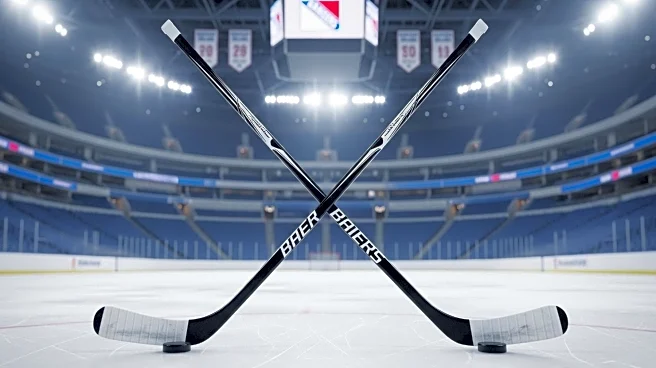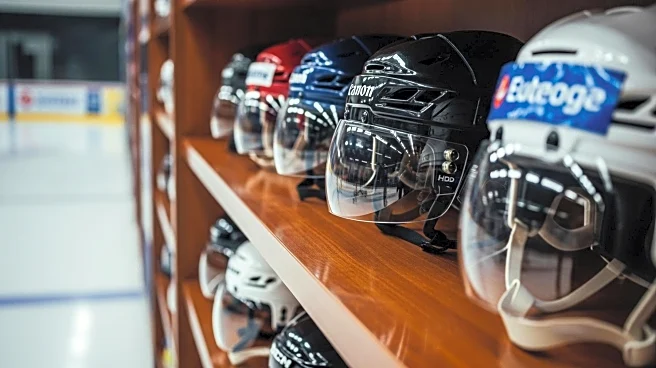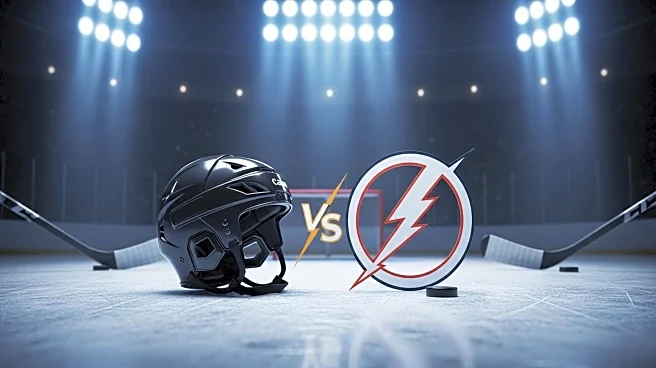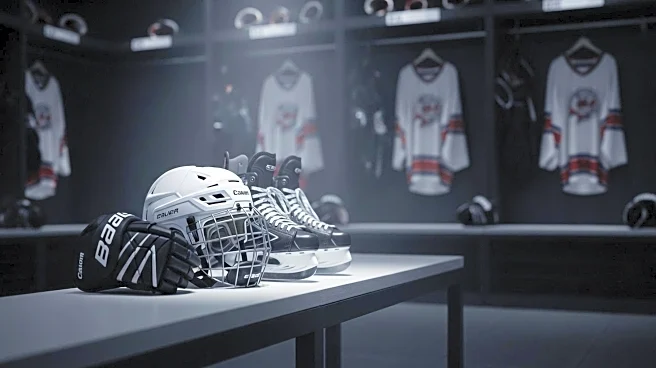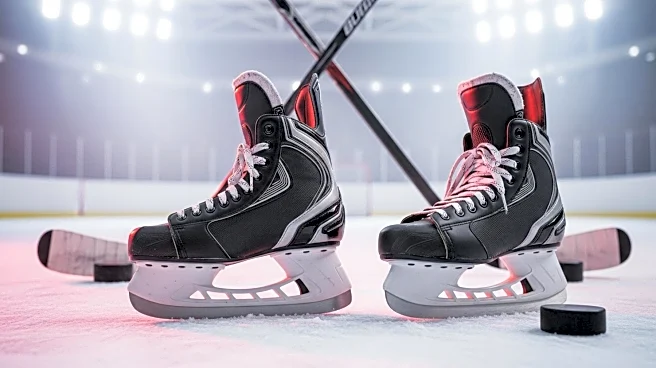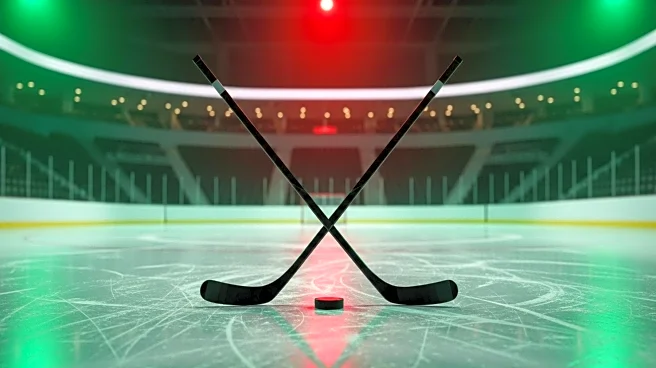What is the story about?
What's Happening?
A recent rule change in NCAA hockey is poised to significantly alter the pathway for young players aspiring to join the NHL. The change allows players aged 16-18 to maintain NCAA eligibility while playing in the Canadian Hockey League (CHL), potentially leading to a reorganization of the North American development model. This shift could result in players spending their age 19 and 20 seasons in NCAA hockey, rather than the traditional route through junior leagues. The new model also introduces an additional import player slot for CHL teams, increasing the number of European players who can join. This development is expected to impact recruiting strategies for NCAA teams, as they adapt to a larger pool of eligible players. Coaches and general managers are already adjusting their approaches to player recruitment, recognizing the importance of securing top talent to build competitive teams.
Why It's Important?
The rule change is significant for the future of hockey development in North America, as it offers a new pathway for young players to transition to professional leagues. By allowing players to gain experience in NCAA hockey, they can develop their skills against older, stronger opponents, potentially easing their transition to the NHL. This could lead to a more competitive environment in college hockey, attracting top-tier talent and enhancing the overall quality of the league. For NHL teams, this change provides an opportunity to scout and recruit players who have honed their skills in a challenging collegiate environment. The impact on player development could be profound, as it offers a new route for players to reach their professional goals, potentially reshaping the landscape of hockey recruitment and development.
What's Next?
As the new model takes effect, stakeholders in the hockey community will closely monitor its impact on player development and recruitment. NCAA teams are expected to refine their scouting and recruitment strategies to capitalize on the influx of eligible players. The CHL will also assess how the age distribution of players evolves, as younger players may opt for NCAA hockey earlier in their careers. The success of this model will depend on how well players transition from NCAA hockey to professional leagues, and whether it becomes a preferred pathway for top prospects. Coaches and general managers will evaluate the effectiveness of this approach in developing players ready for the NHL, potentially influencing future decisions on player development strategies.
Beyond the Headlines
The rule change raises questions about the long-term implications for player development and the balance between NCAA and CHL hockey. Ethical considerations may arise regarding the pressure on young players to choose between different development paths. Additionally, the cultural impact on hockey communities in North America could be significant, as the traditional routes to professional hockey evolve. The integration of European players into CHL teams may also influence the dynamics of player development, offering diverse experiences and challenges. As the hockey world adapts to these changes, the broader implications for the sport's growth and development will continue to unfold.
AI Generated Content
Do you find this article useful?




